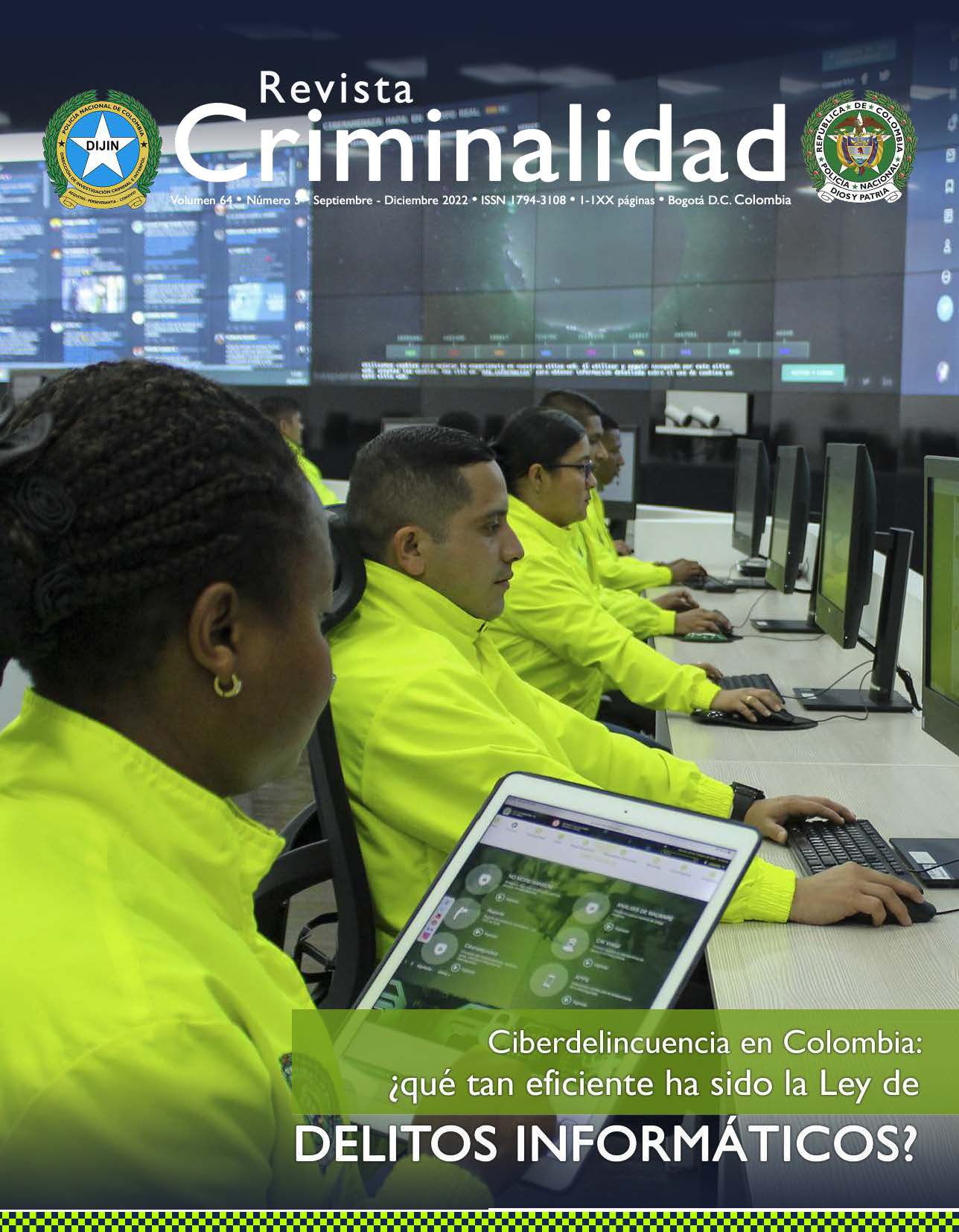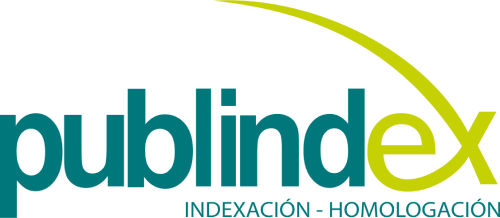Cybercrime in Colombia: how efficient has the Computer Crime Law been?
DOI:
https://doi.org/10.47741/17943108.368Keywords:
Computer crime, computer related crime, public policy, computer security, Qualified theft, benefit function, cybercrimeAbstract
This paper is focused on determining which variables affect the incentives that criminals have when committing cybercrime, and identify whether the current legislation is designed taking into account the criminalization of behaviors and the tools of the entities in charge of catching criminals. It seeks to understand the main factors that encourage cybercrime in the country, taking into account the context of cybercrime for 2019 in Colombia, and with
it, the behavior of cybercriminals in the pre-pandemic. With Law 1273 of 2019, in charge of criminalizing computer crimes in Colombia, the reported data of computer crimes will be reviewed and compared with the cases and indicators of qualified theft crimes, in order to determine the relationship of these two crimes, which are relevant for the entities and have been internalized by the police entities in their study and anti-crime fight for a long time. Once the efficiency of the entities empowered in the fight against cybercrime has been theoretically defined, a function of economic benefits of cybercrime adapted to the Colombian case is proposed, determining the variables that best explain this function. At the end of this academic exercise, through a sensitivity analysis, it is pointed out which aspects of public policy should be considered as a priority, taking into account the economic incentives for cybercriminals and the effectiveness of Law 1273 of 2009.
Downloads
References
Anderson, R., Barton, Ch., Böhme, R., Clayton, R., Eeten, M., Levi, M., Moore, T., & Savage, S. (2012). Measuring the cost of cybercrime. https://cseweb.ucsd.edu/~savage/papers/WEIS2012.pdf
Banca de las Oportunidades. (2020). Personas con productos financieros. https://bancadelasoportunidades.gov.co/index.php/es/personas-empresas
Censo Nacional de Población y Vivienda 2018. (s.f.). https://www.dane.gov.co/index.php/estadisticas-por-tema/demografia-y-poblacion/censo-nacional-de-poblacion-y-vivenda-2018
Centro Cibernético Policial. (2017). Costos del cibercrimen en Colombia 2016-2017. https://caivirtual.policia.gov.co/sites/default/files/costos_del_cibercrimen_2017.pdf
Congreso De Colombia (5 enero de 2009). Ley 1273, Protección de la información y de los datos. Código Penal Colombiano. https://www.sic.gov.co/recursos_user/documentos/normatividad/Ley_1273_2009.pdf
Council, H. O. (2018). Undertanding the cost of cibercrime. https://bit.ly/2IDou1k
Datos abiertos de la. (s. f.). Fiscalía General de la Nación. Recuperado 11 de octubre de 2022, de https://www.fiscalia.gov.co/colombia/gestion/estadisticas/
Díaz, M. R. O., & Rangel, P. E. S. (2020). Desafíos nacionales frente a la ciberseguridad en el escenario global: Un análisis para Colombia*. Revista Criminalidad, 62(2), 199–217. https://revistacriminalidad.policia.gov.co:8000/index.php/revcriminalidad/article/view/168
Departamento Administrativo Nacional de Estadística, DANE. (2020). Censo Nacional de Población y Vivienda -CNPV- 2018. https://www.dane.gov.co/index.php/estadisticas-por-tema/demografia-ypoblacion/proyecciones-de-poblacion
Fiscalía General de la Nación (s.f.). (2022, 11 de octubre), de https://www.fiscalia.gov.co/colombia/gestion/estadisticas/
Global Data Lab. (s.f.). Human development indices 5.0 https://hdr.undp.org/data-center/humandevelopment-index#/indicies/HDI.
Goncharov, M. (2015). The Russian underground 2.0. https://okapitech.co.uk/2016/04/27/therussian-underground/
Home Office. (2018, 18 enero). Understanding the costs of cyber crime. GOV.UK. https://www.gov.uk/government/publications/understanding-the-costs-ofcyber-crime
Internet Crime Complaint Center (IC3) | Annual Reports. (s. f.). (2022, 11 de octubre). https://www.ic3.gov/Home/AnnualReports
Konradt, C., Schilling, A., & Wemers, B. (2016). Phishing: An economy analysis of cybercrime perpetrators. Computers & Security, 58, 39-46. https://doi.org/10.1016/j.cose.2015.12.001
Mundial, B. (2021). Individual using the internet-Colombia. https://data.worldbank.org/indicator/IT.NET.USER.ZS?locations=CO
Organización de los Estados Americanos, OEA. (2020). Estado de la ciberseguridad en el sistema financiero colombiano. https://www.asobancaria.com/wp-content/uploads/2020/10/20201014-ASOBANCARIA-2020_compressed.pdf
Organization for Economic Co-Operation and Development. (OCDE, 2021). Minimum relative to average wages of full-time workers. https://stats.oecd.org/Index.aspx?DataSetCode=MIN2AVE
Reportes anuales. (s. f.). Reporte de Inclusión Financiera 2021 https://www.bancadelasoportunidades.gov.co/index.php/es/publicaciones/reportes-anuales
Ross, A., Barton, C., Bohme, R., Clayton, R., Levi, M., Moore, T., & Stefan, S. (2012). Measuring the cost of cybercrime. https://cseweb.ucsd.edu/~savage/papers/WEIS2012.pdf
Senado de la Republica. (2000). Código Penal colombiano - Ley 599 de 2000. https://perso.unifr.ch/derechopenal/assets/files/legislacion/l_20130808_01.pdf
Corporación Excelencia en la Justicia. (2019). Informe de estadísticas del Sistema Penal Oral Acusatorio (SPOA). https://cej.org.co/wpcontent/uploads/2021/02/Balance-Sist.-Penal-Acusatorio-2019-1.pdf
Statista. (2019). Países de América Latina y el Caribe más atacados por ataques de phishing en 2020. https://www.statista.com/statistics/997956/phishing-attack-user-share-latin-americacountry/
Yonge, J. D. (2022). EY. The pandemic hastened the arrival of trends already on the leadership agenda. CEOs must seize this opportunity to transform or be left behind. https://www.ey.com/en_us/ceo/the-ceo-imperative-how-has-adversitybecome-a-springboard-to-growth
Published
How to Cite
Issue
Section
License
Copyright (c) 2023 Revista Criminalidad

This work is licensed under a Creative Commons Attribution-NonCommercial-NoDerivatives 4.0 International License.
Licencia creative commons CC BY NC ND https://creativecommons.org/licenses/by-nc-nd/2.0/














